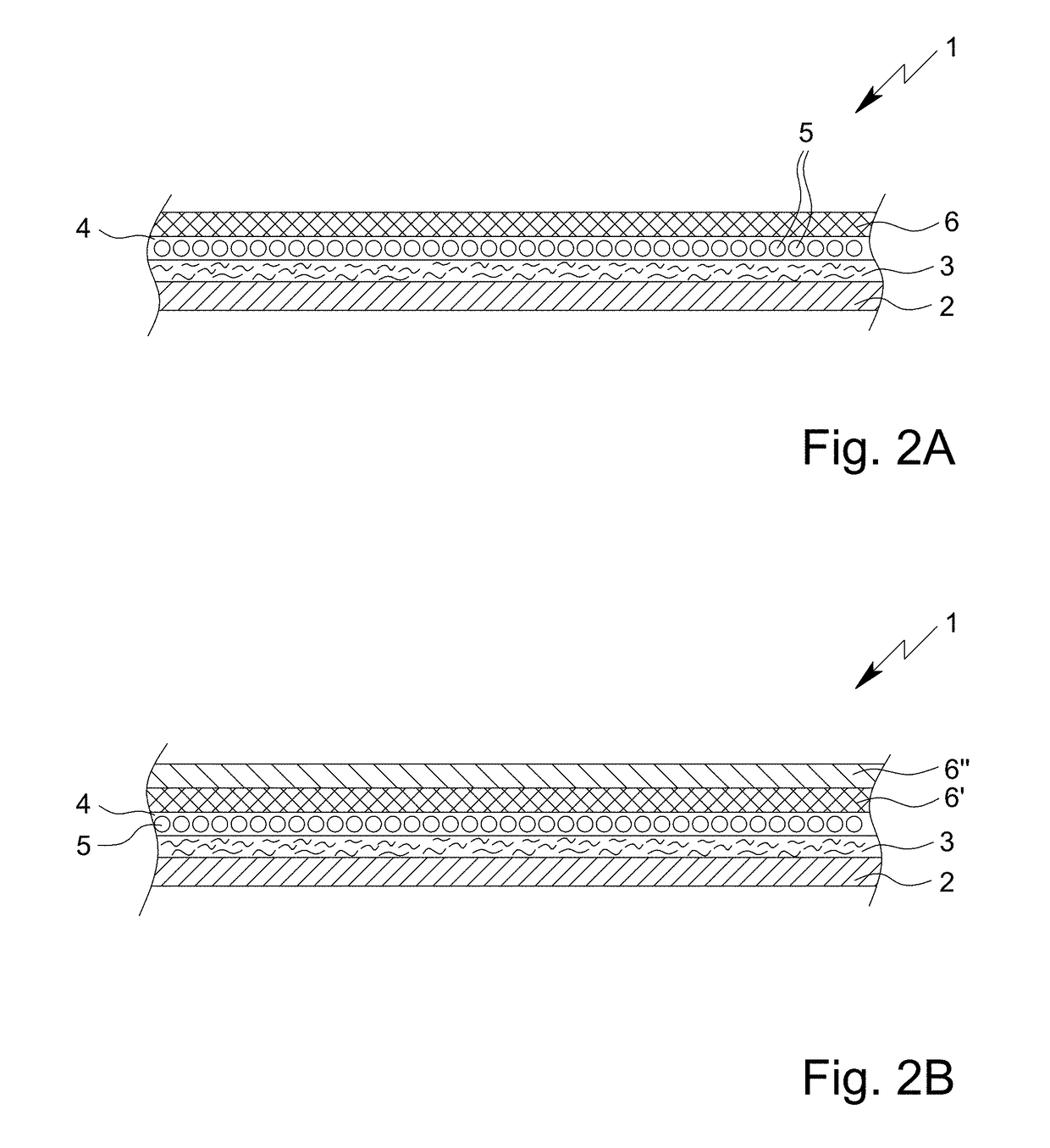Textile protective material of a new type and method for producing same
a protective material and a new type of technology, applied in the direction of film/foil adhesives, nuclear engineering, nuclear elements, etc., can solve the problems of high potential hazard of nuclear poison/warfarina materials for people coming into contact with such substances, death or at least lasting physical impairment of people confronted with such substances, and serious physical harm, etc., to achieve optimized/low base weight, good filtering efficiency, and high durability and stability
- Summary
- Abstract
- Description
- Claims
- Application Information
AI Technical Summary
Benefits of technology
Problems solved by technology
Method used
Image
Examples
Embodiment Construction
[0038]The present invention thus provides—according to a first aspect of the present invention—a textile type protective material, especially with protective function against radioactive noxiant and / or poison materials and / or against biological noxiant and / or poison materials and / or against chemical noxiant and / or poison materials, preferably chemical warfare agent materials, preferably a textile type adsorptive filtering material, wherein the textile type protective material comprises:
[0039](a) a preferably two-dimensional and / or sheetlike, specifically air pervious textile carrier, especially in the form of a textile sheetlike material;
[0040](b) an adhesive layer applied on the textile carrier, wherein the adhesive layer is an air pervious and / or discontinuous layer based on a dried and / or cured, specifically crosslinked, broken (disintegrated) adhesive polymer foam; and (c) an adsorptive layer adhered to the adhesive layer, wherein the adsorptive layer comprises or is formed from...
PUM
| Property | Measurement | Unit |
|---|---|---|
| thickness d3 | aaaaa | aaaaa |
| thickness d3 | aaaaa | aaaaa |
| thickness d3 | aaaaa | aaaaa |
Abstract
Description
Claims
Application Information
 Login to View More
Login to View More - R&D
- Intellectual Property
- Life Sciences
- Materials
- Tech Scout
- Unparalleled Data Quality
- Higher Quality Content
- 60% Fewer Hallucinations
Browse by: Latest US Patents, China's latest patents, Technical Efficacy Thesaurus, Application Domain, Technology Topic, Popular Technical Reports.
© 2025 PatSnap. All rights reserved.Legal|Privacy policy|Modern Slavery Act Transparency Statement|Sitemap|About US| Contact US: help@patsnap.com



